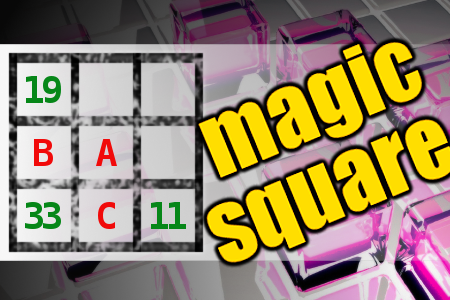MAGIC SQUARE: Calculate A-B+C
The aim is to place the some numbers from the list (6, 9, 11, 14, 17, 19, 30, 33, 35, 80, 97) into the empty squares and squares marked with A, B an C. Sum of each row and column should be equal. All the numbers of the magic square must be different. Find values for A, B, and C. Solution is A-B+C.
Chalk One Up For The Grandparents!
An elderly man in Miami calls his son in New York and says, "I hate to ruin your day, but I have to tell you that your mother and I are divorcing.
Forty-five years of misery is enough."
"Pop, what are you talking about?" the son screams.
"We can't stand the sight of each other any longer," the old man says.
"We're sick of each other, and I'm sick of talking about this, so you call your sister in Chicago and tell her," and he hangs up.
Frantic, the son calls his sister, who explodes on the phone, "Like heck they're getting divorced," she shouts, "I'll take care of this."
She calls her father immediately and screams at the old man, "You are NOT getting divorced! Don't do a single thing until I get there. I'm calling my brother back, and we'll both be there tomorrow. Until then, don't do a thing, DO YOU HEAR ME?" and hangs up.
The old man hangs up his phone and turns to his wife. "Okay," he says, "They're coming for Passover and paying their own airfares."

